
It’s not often you get to visit a vineyard that’s the first in a new viticultural region. But that’s what Costa y Pampa, Trapiche’s latest project, is.
I visited on a sunny summer’s day, flying into the resort town of Mar del Plata and then driving along the coast for about an hour.
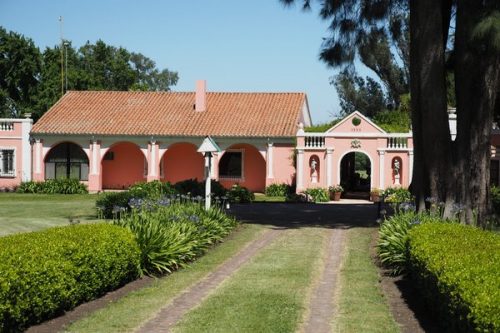
The region here is known as Chapadmalal, and the estate’s name is Santa Isabel. The owner of the 800 hectare estate is a good friend of Daniel Pi (Trapiche’s chief winemaker), and Daniel persuaded him it might be a good idea to have a vineyard here. Daniel had been thinking for a while that it was unsual that Argentina had no coastal vineyards, and in 2009 they began planting Pinot Noir, Sauvignon Blanc and Chardonnay. Later on, Riesling, Gewurztraminer, Malbec, Cabernet Franc, Cabernet Sauvignon and Merlot were added in smaller quantities.


2012 was the first vintage, made in Mendoza, and the quality was encouraging so they decided to go full speed ahead. In 2013 they began building the winery, and also hired Daniel Pi’s nephew Ezequiel Ortego as winemaker, who I visited with.

In 2014 they built the cellar door, and in 2015 planted Albariño for the first time.

Wind is one of the viticultural challenges here: you can see the effects of wind stress on the vines, as well as what looks like the effect of herbicide drift (normally, wind will shorten nodes but not change morphology). Initially, row orientation of the vineyard was decided to let the prevailing winds blow up and down the rows, with the thought being that this would help with disease pressure. Now, though, the newer plantings are the other way so that the first couple of bays bear the brunt of the wind and protect the remainded. No irrigation is needed, as the Atlantic influence (6 km away) results in an annual rainfall of 1000 mm/year. There’s a healthy 12 C diurnal variation in temperature in the peak of the growing season.

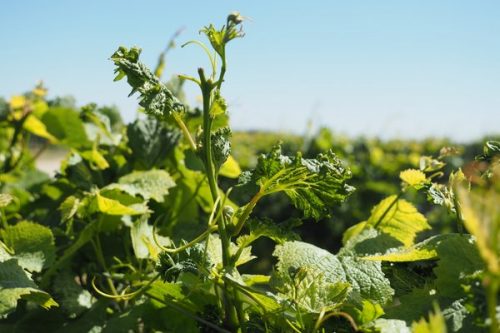
Another challenge is ants, and yet another is the local parrots. Costa y Pampa have left a half-hectare vineyard block near some trees where the birds roost that they basically surrender to the birds each year: it means they leave the rest of the vineyard alone. Frost is also a problem in spring, and is fought with smudge pots.

So far, the 800 hectare estate has 25 hectares of vines. ‘We are still in an experimental phase,’ says Ezequiel, ‘and we are still learning. Every year presents new challenges.’
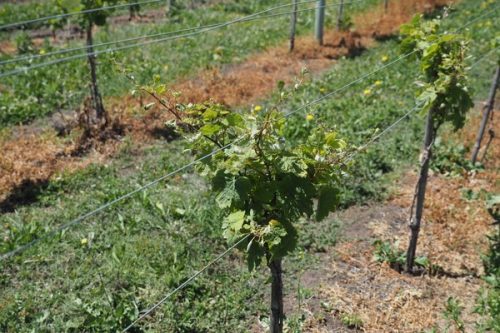
In 2019 they are going to plant a new vineyard even nearer the coast (100-500 m). ‘There is a big potential in this region, but we need to learn to understand the climate and the other factors like the parrots and ants that we don’t have in Mendoza,’ says Ezequiel. ‘Another challenge is to get people to adjust from the sort of farming they do here to viticulture, which is more delicate.’ It can be a challenge to get local people to work in the vineyards – in the past they’ve lost them to other crops such as kiwi fruit. 50% of people working in the vineyard can’t read or write, which is a challenge.
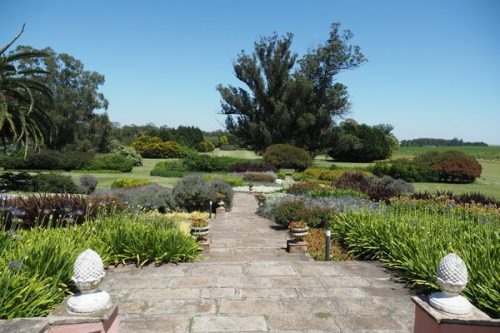
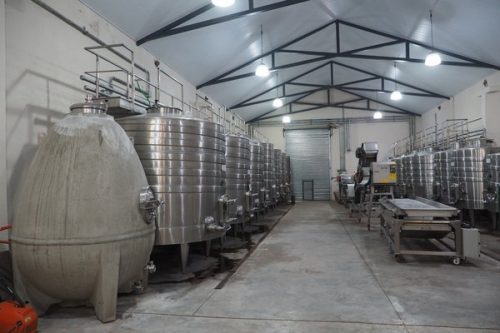
2017 was a difficult vintage, with 200 mm rain just before harvest – the vineyard was practically flooded, and grapes were full of water. The wines have turned out pretty well, though. 2018 is stronger, but there was quite a bit of hydric stress from a very dry beginning to the season. The wines retail for £15-18 in the UK.

Costa & Pampa Sauvignon Blanc 2017 Chapadmalal, Buenos Aires, Argentina
11.9% alcohol. 48 h in the press and to tank (to get some flavour), and used the lees very cold for five days. It was a tough process to make a wine that wasn’t watery. This is linear and fresh with crisp lemony fruit, a twist of grapefruit and some nice grassy aromatics. Has nice freshness and good acid (8 g/l TA). 90/100
Costa & Pampa Sauvignon Blanc 2018 Chapadmalal, Buenos Aires, Argentina
Lively with nice precision and some tropical fruit notes. Has some elderflower, too. Linear citrussy palate. Very cool climate. 91/100
Costa & Pampa Riesling 2018 Chapadmalal, Buenos Aires, Argentina
Just 1000 litres made. Bright and fresh with nice citrus/lime fruit. Has nice intensity and good acidity with generous, textured citrus fruit. 92/100
Costa & Pampa Pinot Grigio 2017 Chapadmalal, Buenos Aires, Argentina
First vintage, less than one bunch per plant. 2 hectares of Pinot Gris, gave 500 ltres of juice. This is linear and focused with a slight savoury, earthy undercurrents to the apple, grape and pear fruit. Dry, textured and with keen acidity. 88/100
Costa & Pampa Gewurztraminer 2018 Chapadmalal, Buenos Aires, Argentina
Floral nose with nice lychee character. Textured with smoothness and freshness. Dry in style with pretty grapey fruit. 90/100
Costa & Pampa Albariño 2017 Chapadmalal, Buenos Aires, Argentina
11.5% alcohol. This was the first year and it was made more like a Chardonnay; in the second year it was made more like a Sauvignon. This has lovely grainy texture and keen acidity. Notes of tangerine and lemons with a bit of spiciness. Quite lean with good acidity and a brisk lemony finish. 90/100
Costa & Pampa Albariño 2018 Chapadmalal, Buenos Aires, Argentina
Floral, peachy nose with some nectarine. Lovely fruit here with nice pear and apricot richness. Very pure and expressive. 92/100
Costa & Pampa Chardonnay 2017 Chapadmalal, Buenos Aires, Argentina
Stainless steel and barrel ferment. Fruity and bright with a nice lemony core, as well as some juicy orange characters. There’s a twist of hazelnut, too. Very bright and linear, with a touch of vanilla, too. Fresh but not yet integrated. 87/100
Costa & Pampa Chardonnay 2018 Chapadmalal, Buenos Aires, Argentina
20% barrel ferment, 20% in concrete egg, 60% in tank. A very fresh, bright, linear chardonnay with some structure and subtle pear richness. Quite linear but also has depth. 92/100
Costa & Pampa Pinot Noir 2016 Chapadmalal, Buenos Aires, Argentina
12 months in 3rd and 4th use French oak. Light in colour, this is a pure, bright, fruity expression of Pinot Noir. It’s primary and shows off red cherry and strawberry fruit. Easy and generous and quite elegant, in a simple fruity style. 89/100
Costa & Pampa Pinot Noir 2017 Chapadmalal, Buenos Aires, Argentina
This has a bit of structure: it’s fresh and elegant but has some spicy detail. Grippy and quite fresh with nice red cherry and plum fruit, finishing nicely spicy. Really appealing with a twist of savoury mineral character. 91/100
Costa & Pampa Extra Brut NV Chapadmalal, Buenos Aires, Argentina
This is 2016. Traditional method, 18 months on lees. 80% Chardonnay, 20% Pinot Noir, 5 g/l dosage. Very fresh and fruity with good precision. Shows pear and citrus with a twist of pineapple richness. Very fruity and expressive and quite delicious in a fruit-driven style. 90/100
Costa & Pampa Brut Rosé NV Chapadmalal, Buenos Aires, Argentina
2016 vintage, 5 g/l sugar, 80% Pinot Noir, 20% Chardonnay. Has Sauvignon Blanc in the liqueur d’expedition. Exuberantly fruity with a nice sappy, leafy edge to the tangerine and cherry notes, and some nice elderflower hints. Very bright, fruity and delicious. 90/100
Find these wines with wine-searcher.com
Leave a Comment on In Argentina (2) visiting Costa y Pampa, a winery in a new viticultural region